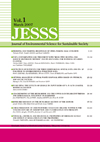Recent years have witnessed increased attention being given to the evaluation and selection of alternative waste treatment strategies from the view of reduction of greenhouse gas (GHG) emissions. However, a long period of waste records is necessary for getting acceptably accurate results, especially in calculating GHG emission from disposal site. Therefore, in this paper, applying the systematic approach we have developed in the previous work, the back-casting and ex-post forecasting of the waste quantity by composition in the past is conducted. Then, current GHG emissions in five Chinese metropolitan cities are investigated and analyzed; thereafter, a scenario analysis is carried out in Shanghai based on the forecasts of waste generation and the corresponding waste category in 2015. Methane (CH
4), carbon dioxide (CO
2) and nitrous oxide (N
2O) are mainly taken into account in GHG emission due to significant amount emitted from waste treatment. The results confirm that the per capita CO
2 emission factor (kg CO
2-eq/kg waste-treated) in Shanghai, Guangzhou, Hangzhou, Wuhan and Chengdu in 2007 is 0.48, 0.59, 0.57, 0.41 and 0.48 respectively, thereby demonstrating that economic growth is the main driving force of GHG emissions currently observed in Chinese cities. Further, through the scenario analysis, composting and integrated waste management are considered as effective attempts at reducing GHG emissions in Shanghai.
View full abstract
